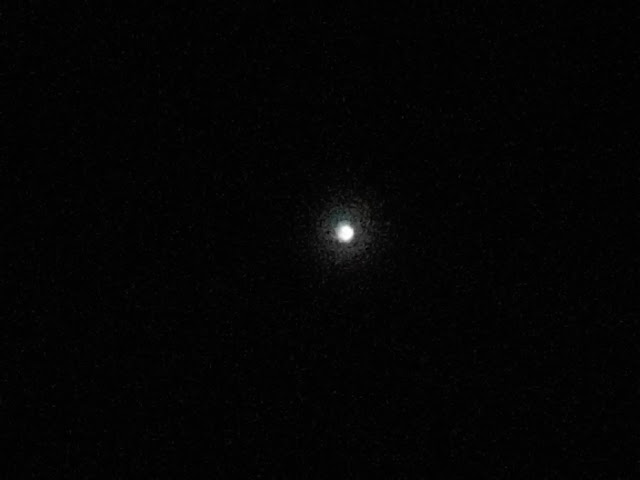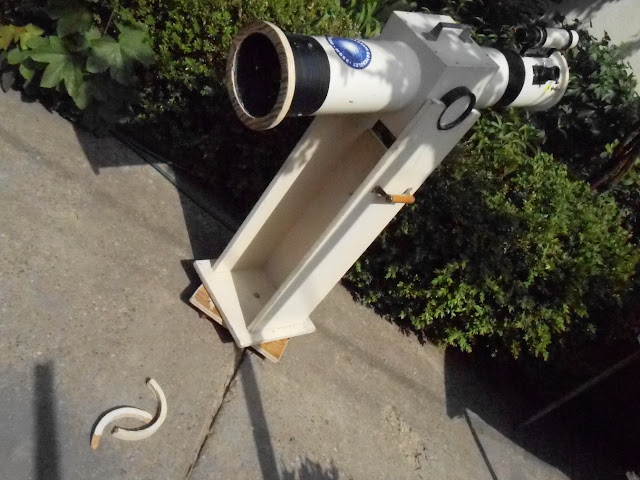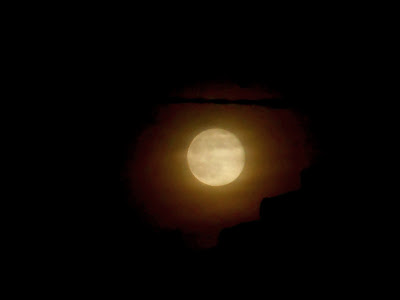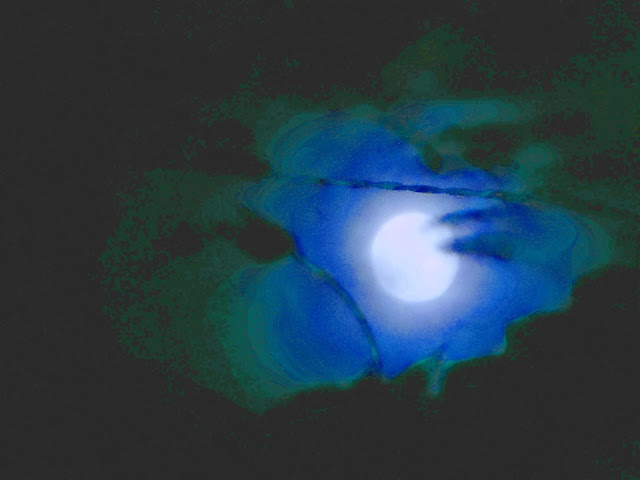I used Moon & Skyglow filter as well as colored ones : green, yellow, red and blue.
The best results I got were with the red filter, by which, at 100x, I saw eight or nine ray-craters spread over the Moon's surface.
Remarkable is a radius starting from Tycho, crossing the entire moon to the North-West.
I attach a picture, generally unsuccessful, but in which you can see this amazing radius that "crosses" with all the forms of the lunar relief.
I took note of the position of eight of the ray-craters I remembered, last night I did not have the Moon map with me and I did not took notes.
10 Aprilie 2017 : Am observat Luna cu luneta de 90x600mm la mariri de la 24x/Plossl 25mm pana la 100x/orto Baader 6mm.
Am folosit filtre ,atat Moon&Skyglow cat si colorate :verde ,galben,rosu si albastru.
Cele mai bune rezultate le-am obtinut cu filtrul rosu , prin care , la 100x ,am vazut opt sau noua cratere cu raze ,raspandite pe suprafata Lunii.
Remarcabila este o raza care pornind din Tycho ,strabate intreg discul selenar pana spre limbul nord-vestic.
Atasez o poza ,in general nereusita dar in care se vede binisor aceasta raza uimitoare care strabate ''cu nepasare'' prin toate formele de relief selenar.
Am notat pe poza pozitia a opt dintre craterele cu raze despre care mi-am amintit, aseara nu am avut harta selenara la mine si nu am luat notite.
The 90x600mm refractor , the 60x700mm refractor and Fujinon Mariner 7x50mm binocular.
2'' to 1.25'' reduction,University 12.5mm Ortho and Revelation 9mm Plossl.
''Circle T'' Kellner 9mm , orthoscopic 6mm ,Huygens 20mm ,Huygens 9mm and Huygens 6mm oculars.
LV 30mm/2'' ocular ,University 12.5mm Ortho and Revelation Astro 9mm Plossl .
Penelopa 1.5'' DIY pipe -mount , 60x700mm refractor and Lybar chair.
Jupiter Corona on 2 May 2017.
The worn out legs , ground board and merry-go-round of my 125mm F/7 Dobsonian.
Time for refurbishment !
New ground board with good legs , rubber armored.
The old helicoidal focuser have worn out threads.
Another focuser ,still helicoidal.
A new reinforcing ring for the primary mirror end.
Colimation is a must !
Ready for fight ,again!
Moon Corona 3 of May ,2017.
Pics taken with the Nikon Coolpix S3300 compact camera.
Crepuscular rays in the evening of 27 May 2017.
Work on my home-made 200mm F/6.16 Dobsonian called ''Toleascope''.
The optics -mirrors , oculars ( like Sirius 25mm and Televue Radian 6mm ),6x30mm finder ,1.25'' colimation laser and the first Ravneberg open-tube mounting were provided by my friend Alin Tolea , a Mecena of Romanian amateur Astronomy.
I started modifications of the mounting to a solid tube ''circus canon'' type to be better adapted for Urban Astronomy.
The rocker , altitude bearings and Stellafane type ground board.
An ocular shelf under development.
Just a mock-up assembly!
The HC-2 ''Kineoptics'' focuser and DIY adapter.
The solid tube is rolled 0.5 mm galvanized steel sheet.
The sky is the limit !





















































































